[English version not available]
Displaying 1-5 of 5 articles from this issue
- |<
- <
- 1
- >
- >|
-
2023Volume 34Issue 1 Pages 3-7
Published: 2023
Released on J-STAGE: May 01, 2023
Download PDF (396K) -
2023Volume 34Issue 1 Pages 8-13
Published: 2023
Released on J-STAGE: May 01, 2023
Download PDF (534K)
-
2023Volume 34Issue 1 Pages 14-20
Published: 2023
Released on J-STAGE: May 01, 2023
Download PDF (456K)
-
2023Volume 34Issue 1 Pages 21-26
Published: 2023
Released on J-STAGE: May 01, 2023
Download PDF (388K)
-
2023Volume 34Issue 1 Pages 27-29
Published: 2023
Released on J-STAGE: May 01, 2023
Download PDF (748K)
- |<
- <
- 1
- >
- >|
